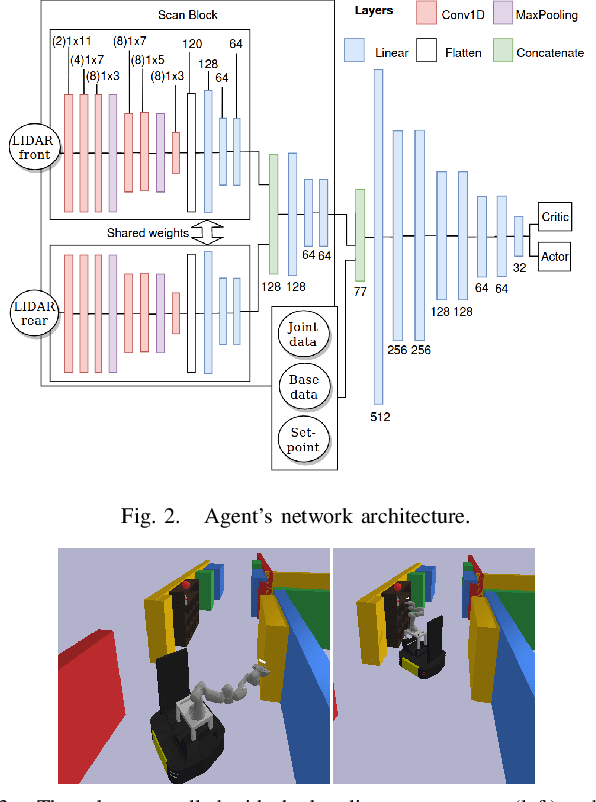Kostas Vlachos
Dropout MPC: An Ensemble Neural MPC Approach for Systems with Learned Dynamics
Jun 04, 2024Abstract:Neural networks are lately more and more often being used in the context of data-driven control, as an approximate model of the true system dynamics. Model Predictive Control (MPC) adopts this practise leading to neural MPC strategies. This raises a question of whether the trained neural network has converged and generalized in a way that the learned model encapsulates an accurate approximation of the true dynamic model of the system, thus making it a reliable choice for model-based control, especially for disturbed and uncertain systems. To tackle that, we propose Dropout MPC, a novel sampling-based ensemble neural MPC algorithm that employs the Monte-Carlo dropout technique on the learned system model. The closed loop is based on an ensemble of predictive controllers, that are used simultaneously at each time-step for trajectory optimization. Each member of the ensemble influences the control input, based on a weighted voting scheme, thus by employing different realizations of the learned system dynamics, neural control becomes more reliable by design. An additional strength of the method is that it offers by design a way to estimate future uncertainty, leading to cautious control. While the method aims in general at uncertain systems with complex dynamics, where models derived from first principles are hard to infer, to showcase the application we utilize data gathered in the laboratory from a real mobile manipulator and employ the proposed algorithm for the navigation of the robot in simulation.
Improved Reinforcement Learning Coordinated Control of a Mobile Manipulator using Joint Clamping
Oct 05, 2021



Abstract:Many robotic path planning problems are continuous, stochastic, and high-dimensional. The ability of a mobile manipulator to coordinate its base and manipulator in order to control its whole-body online is particularly challenging when self and environment collision avoidance is required. Reinforcement Learning techniques have the potential to solve such problems through their ability to generalise over environments. We study joint penalties and joint limits of a state-of-the-art mobile manipulator whole-body controller that uses LIDAR sensing for obstacle collision avoidance. We propose directions to improve the reinforcement learning method. Our agent achieves significantly higher success rates than the baseline in a goal-reaching environment and it can solve environments that require coordinated whole-body control which the baseline fails.
 Add to Chrome
Add to Chrome Add to Firefox
Add to Firefox Add to Edge
Add to Edge